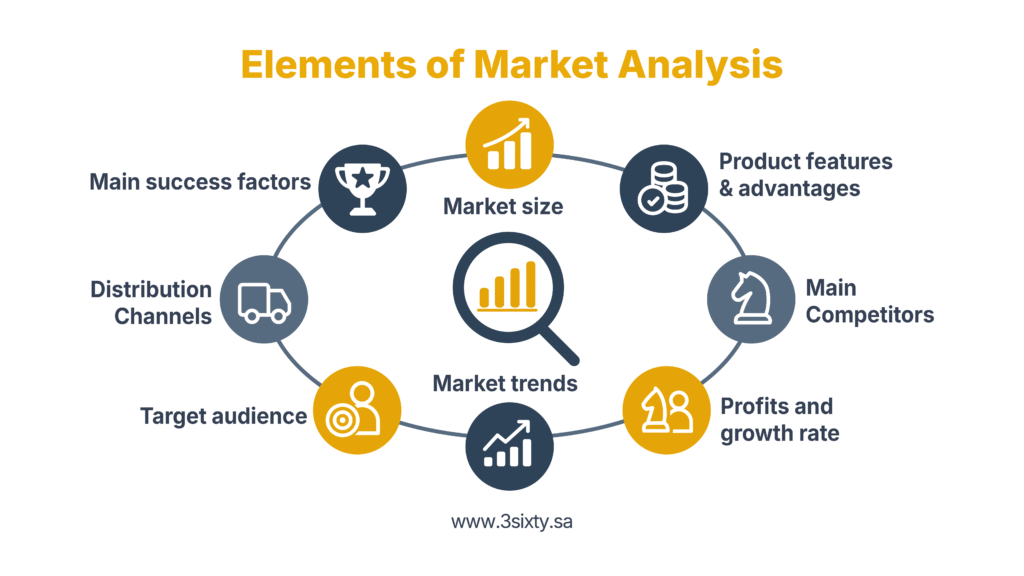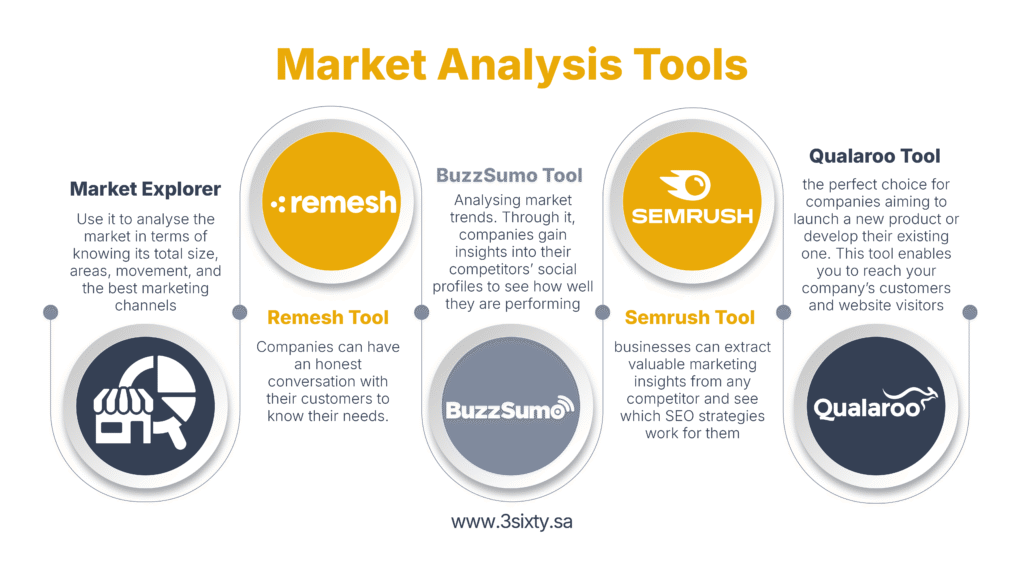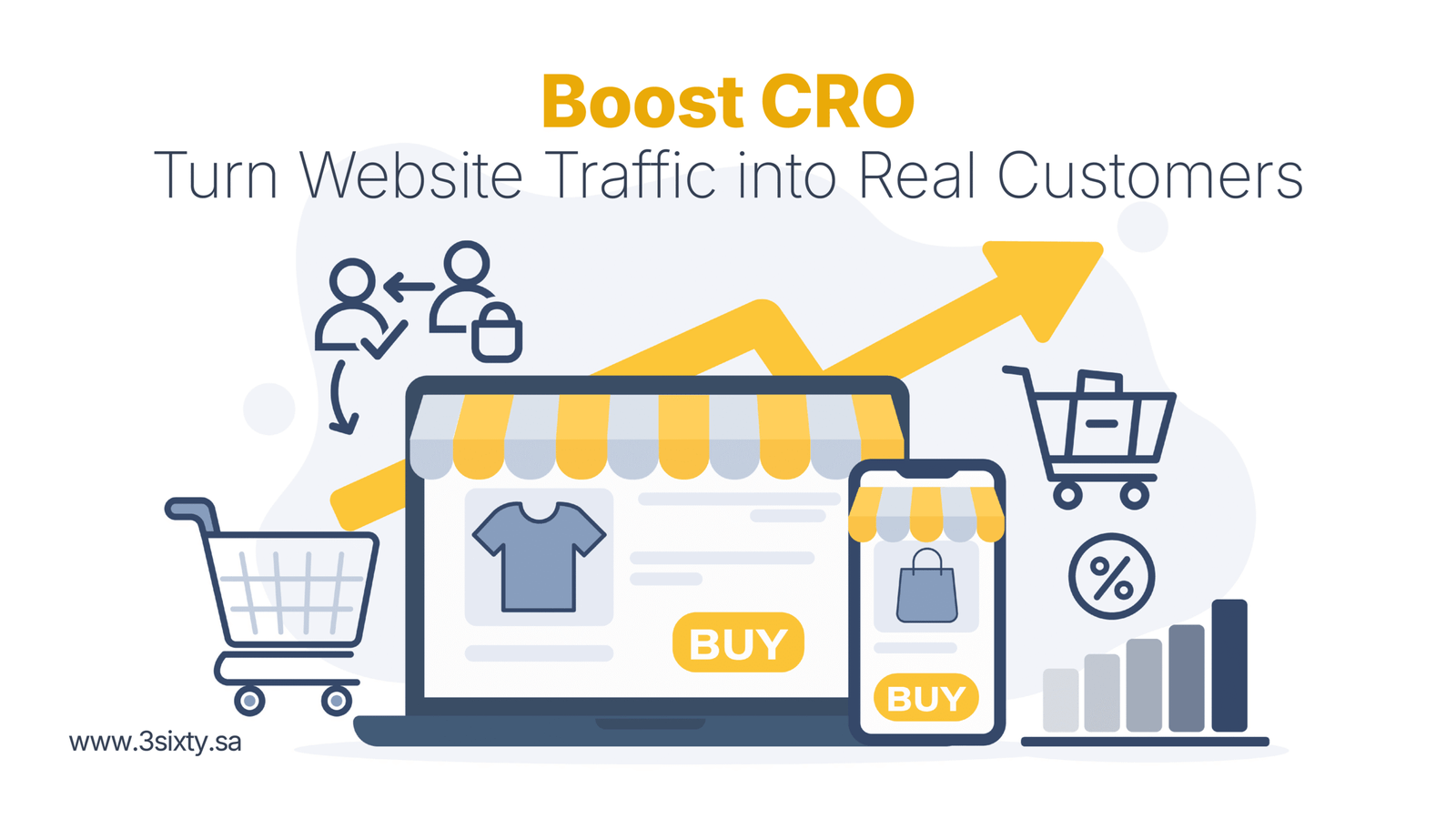Smart market Research to Successful Marketing Decisions

In the modern business world, market research and evaluating the effectiveness of strategies have become essential factors for enhancing companies’ superiority and continuity, as they are critical for identifying the target market and building effective marketing and sales plans.
One of the essential elements of business success is understanding your customer base. Developing an effective marketing strategy can be challenging without understanding your target customers, their needs, and how they prefer to receive goods from you. This is where market analysis comes in.
In addition, you can determine how supply and demand relate to a particular product or service, and conscious decisions about potential marketing strategies can be made based on these insights.
Table of Contents
- What is Market Research?
- The importance of studying Market Research?
- Elements of market analysis?
- Ways to conduct market research
- Market analysis tools:
- What are the types of market research
- Frequently Asked Questions (FAQ):
What is Market Research?
Market research is the process by which companies collect data and information about any aspect they wish to understand, analyse it, and benefit from it in making calculated decisions based on accurate data in a systematic manner to make better decisions. However, its real value lies in the way in which all the data obtained is used to achieve better knowledge of the target customer category.
The importance of studying Market Research?
Market research involves analysing information about current and potential customers, collecting details on target market characteristics such as spending and returns, and monitoring potential competitors. Accordingly, market research aids in developing robust business plans, expanding into new markets, and identifying the target audience based on several factors, including location, gender, age, and income level, thereby contributing to the long-term success of the product or service in the market.
Market research is an essential stage for any business before launching, as it provides the opportunity to make calculated decisions that enhance the chances of success. The primary goal of market research is to provide in-depth insights into the target market and customers, which mitigates risks and increases the chances of prosperity.
Through market research, production sectors can more accurately determine their target market size, a key factor in considering the launch of new products in the future. In addition, this research helps predict potential problems and obstacles, enabling companies to plan and implement appropriate solutions to address challenges.

Elements of market analysis?
Market analysis is a vital element for companies to flourish, as it includes several essential components, which are as follows:
1- Market size
Market size is the total revenue generated by a market over a given period, which draws attention to current sales volume and future sales forecasts. Companies utilise various tools to collect data on market size, including government data, surveys, financial reports, and business documents.
2- Main success factors
These factors include employees, management, marketing and operating strategies, and resource allocation, which require awareness to remain competitive. Evaluating these factors helps companies discover areas for development, making it easier for them to achieve their goals.
3- Distribution channels
Through distribution channels or market access channels, the path to the customer can be determined, and therefore, they play a clear role in market analysis. Companies also use these channels to evaluate their relationship with customers and identify new opportunities to expand their customer base.
4- Target audience
Companies benefit from market analysis in identifying their target audience by separating them from the larger market and meeting their specific needs, which helps increase customer loyalty to companies.
5- Market trends
Market analysis involves closely monitoring market trends to understand current and future trends, thereby attracting new customers. Consequently, market trends are a crucial element of this analysis.
6- Profits and growth rate
Market analysis primarily aims to predict future profits. This component involves companies estimating their potential customer base, then displaying market size and future cash flows. The growth rate is also calculated using financial ratios.
7- Main competitors
This component includes analysing competitors in the market. Through market analysis, a company can understand competing companies in the same industry, in terms of size, location, capital assets, human resources, technology, customers, and strategy. Thus, the company can estimate realistic market potential and the value propositions offered by new competing companies.
8- Product features and advantages
New businesses need to conduct market analysis to understand product preferences in advance. Different markets may have different preferences and expectations regarding product attributes, whether those attributes are defined by geography or other factors.
Ways to conduct market research
As markets grow and large production methods are adopted, it has become necessary to reduce errors in product distribution, as these errors have become very costly and can sometimes be devastating.
Therefore, it has become essential to understand the market accurately and recognise any changes that may occur in it, as well as to know how consumers interact with a new product or an existing product. There are several ways to conduct Market Research that help companies achieve this, including:
1- Internal search:
Market research can be conducted internally by analysing a company’s historical records, such as comparing sales in different regions or across multiple periods, as well as analysing sales performance under changing economic conditions.
2- Product testing:
Many elements determine a product’s success in the market, from its features and method of use to its packaging design and brand name. To evaluate the effect of these elements, samples of the product can be distributed to consumers, such as housewives and asked for their opinions. Each sample should contain a slight difference from the other, which contributes to determining the final and acceptable form of the product before putting it on the market.
3- Retail tests in selected regions:
After defining the product details, a specific area is selected for retail testing. A simple advertising campaign must be conducted among selected retailers before the product is presented to them. Analysing reactions and sales at this stage helps predict the results of product advertising on a larger scale.
4- Consumer reviews:
This survey includes a review of the target consumer sector, and participants are selected in different ways to ensure correct representation of each segment of society, known as random samples. Participants answer questionnaires containing questions inquiring about their reactions, and the success of these questionnaires depends on the accuracy of the samples and their skill in expressing their opinions.
5- Market research and advertising:
This type of research evaluates the effectiveness of advertising campaigns by measuring customer memory of ads before and after publication, using tools like reading surveys and print ad testing. How well a customer remembers advertising elements is an indicator of campaign success.

Market analysis tools:
Since Market Research is a large-scale process that requires many tools to complete, we suggest the best tools used in this process:
1- Market Explorer
Many companies use the Market Explorer tool to analyse the market in terms of knowing its total size, areas, movement, and the best marketing channels, in addition to market competitiveness, cost, and sales potential, which contributes to understanding each competitor, learning from them, and developing a strategy that helps outperform them.
2- Remesh tool
With Remesh, companies can have an honest conversation with their customers to know their needs. It is equipped with artificial intelligence technology that analyses and organises their responses in real time, so that companies can make informed decisions. Therefore, it is a unique tool that eliminates the need to send surveys and collect responses over time.
3- BuzzSumo Tool
BuzzSumo is one of the most critical tools for analysing market trends. Through it, companies gain insights into their competitors’ social profiles to see how well they are performing, and accordingly adjust their social media strategy, such as Facebook or Instagram.
4- Semrush tool
Using Semrush’s digital marketing and SEO tool, businesses can extract valuable marketing insights from any competitor and see which SEO strategies work for them, based on what their actual target audience is looking for.
5- Qualaroo tool
The Qualaroo market analysis tool is the perfect choice for companies aiming to launch a new product or develop their existing one.
This tool enables you to reach your company’s customers and website visitors by asking specific questions to understand their needs better, and then using the answers to update the product or launch a new one.
What are the types of market research
When we talk about market research, we should know the five main types of market research that are used to evaluate the market better:
1. Primary research:
Primary research focuses on collecting data directly from the source through tools such as questionnaires, interviews, and observation. Its goal is to evaluate consumer acceptance and approval of new products or services. This method allows for immediate and direct insights that contribute to understanding consumer behaviour.
2. Secondary research:
This research relies on information and data collected from external sources such as reports, previous studies, and general statistics. This type of research is considered low-cost compared to primary research. Still, it can sometimes be inappropriate if the information is outdated or not relevant to the company’s current situation.
3. Quantitative research:
Quantitative research focuses on tangible numerical data such as statistics, sales volumes, and customer numbers. This research employs techniques including telephone interviews, email interviews, and personal interviews to gather accurate, measurable information and conduct quantitative analysis.
4. Qualitative research:
Qualitative research seeks to gain a deep understanding of consumer behaviours, attitudes, and desires. This research examines the “how” and “why” people make their decisions, and uses tools such as chat rooms, salespeople, and personal interviews to gather ample, non-numerically specific information.
5. Descriptive research:
This type of research is also known as statistical research and aims to describe the data and characteristics associated with the project under study. Descriptive research answers questions such as “who”, “what”, “when”, “where”, and “how”, but does not address the underlying causes of the phenomena it studies.
This type of research accurately describes the condition but does not provide explanations for why.
Each of these types of market research contributes to providing deeper insight and a better understanding of the market and consumers, supporting companies in making informed strategic decisions.
In a rapidly changing business environment and increasing competition, no company can rely solely on intuition in making its decisions. Market research is no longer a luxury or an optional step, but rather an indispensable strategic tool for understanding market trends, identifying opportunities, and reducing risks.
Whether you’re launching a new product or improving an existing service, thoughtful market analysis gives you the clear insight you need to guide your decisions confidently.
Frequently Asked Questions (FAQ):
What is the difference between market research and market analysis?
Market research involves collecting data about the market and its customers, whereas market analysis interprets this data to understand market trends, competition, and size.
Is market research necessary before launching a new project?
Yes, market research is an essential step to reduce risk and understand audience needs and market expectations before investing money and effort in a new product or service.
What is the best type of market research for startups?
Primary and qualitative research is most effective for startups because it gives a direct understanding of customer behaviour and expectations, which helps improve products and accurately guide marketing campaigns.
Can market research be conducted on a limited budget?
Yes, there are low-cost methods, including online surveys, internal data analysis, and the use of free tools like Google Forms and Think with Google. Additionally, competitor analysis can be conducted through tools such as Ubersuggest or SimilarWeb.









